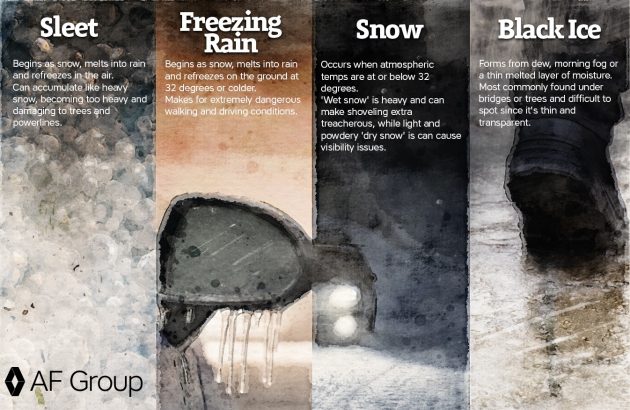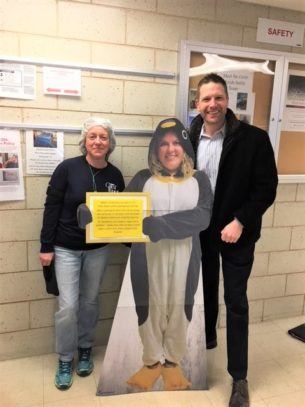Precipitation Education: Know the Unique Risks!
Search the Library
January 14, 2020
In many areas of the country, we see large amounts of snowfall and ice during the winter months. In fact, not only does snow fall in many locations from November through March, it can be preceded, mixed with or followed by rain, freezing rain or sleet. Because of this, it’s important to understand the conditions and risks associated with various types of winter precipitation.
According to weather.com, winters often treacherous conditions can be summarized as follows:
Sleet
Usually begins as snow high in the atmosphere, melts into rain through a small warm band of air and then refreezes into pellets as it passes back into cold air.
Risks
Sleet pellets bounce as they hit the ground and can accumulate like snow. When this happens, it can become very heavy and cause damage to trees, structures and power lines.
Freezing Rain
Like sleet, freezing rain also begins as snow, but hits a larger band of warm air, melting into rain until it falls and freezes on the ground. For rain to become freezing rain, surface conditions need to be 32 degrees (freezing point) or below.
Risks
Freezing rain makes for extremely dangerous walking and driving conditions.
Snow
When atmospheric temperatures are at or below the freezing point, and no warm bands of air are trapped between the upper atmosphere and the ground, snow is the result.
Risks
Wet snow is generally very heavy and can make shoveling extra treacherous. Dry snow occurs when the temps are frigid, creating tiny, powdery snowflakes that can easily blow around, causing visibility issues for drivers.
Black Ice
This thin, transparent layer of ice blends into ground surfaces. It can form from dew or fog in the morning, or in the afternoon when the sun warms up the frozen surface enough to melt a thin layer of moisture that refreezes.
Risks
Black ice can be found in shaded places like under bridges or trees or in the shadows of buildings. It can sneak up on you when you’re least expecting it.
It is critical to have a snow and ice removal program in place to keep employees safer this winter and beyond. While weather conditions that increase the slipperiness of outdoor surfaces can’t be controlled, slips and falls can be avoided or reduced through careful attention to and maintenance of sidewalks, curbs and parking lots.
For more information, contact your dedicated United Heartland loss control consultant.


Dress Like a Penguin?
UH partner, Crest Foods, found a creative way to promote winter safety this year. Their Benefits Administrative Assistant Savannah Fagan, volunteered to dress up in a penguin costume and take part in a photo shoot that would be featured on posters, messaging and even a life-size cardboard cutout!
The cutouts are displayed at each of the six Crest Food locations and feature a message board so the employer can add different reminders throughout the winter months, such as: “Walk like a penguin,” or “Watch out! Parking lots and sidewalks could be slippery today.” Employees are also encouraged to take selfies with the cardboard cutout and post to the company’s Facebook page.
In addition to the signs, janitors place safety cones with flashing lights outside on days of snow/ice/freezing conditions. And for a special treat, management plans to provide coffee and hot cocoa on special days in January and February as a friendly WalkSafe reminder. Kudos, Crest Foods, for keeping your employees safe from slips and falls this winter!
Share this resource:
URL coppied to clipboard.
Or send it directly to someone via our email form:
